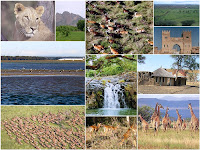Six Of The Biggest Myths About Using Renewable Energy In South Africa (and Africa) Blown Away
The evidence is in: Renewable energy is viable, reliable, and ready to go – all that’s missing is the political will to kick start an energy revolution in South Africa and the rest of Africa. Here are some of the most common myths about renewable energy - just that – myths that don’t stand up to reality. Not only for South Africa, but for the rest of the African countries - the facts are overwhelmingly in favor of using renewable, sustainable, clean energy:
- Right now, renewable energy is actually already cheaper than coal and nuclear power at every step.
- Renewables technology is ready to go, and is working reliably in countries around the world.
- The key to getting a constant supply of electricity from renewable energy is to have a mix of sources: solar and wind power, natural gas, and anaerobic digestion plants. By having a mix of sources which are spread over a wide area, we ensure there will always be a supply of energy.
- The reality is that South Africa’s and other African countries' grids – the systems that connect power stations to consumers – need to be improved or replaced regardless of the power source they use. It would be far more efficient to upgrade to new smart grid systems than waste money on old systems that will continue having problems down the line. It’s similar to the the choice between repairing an old VCR or buying a new DVD player.
- Birds and bats: A common argument against wind farms is that they kill birds and bats. However, if environmental impact assessments are conducted and migratory patterns are assessed before construction, this is avoided completely. It is vital that these assessments are made to ensure the safety of birds and bats, as with any development project.
- The Energy [R]evolution is about a gradual transition to renewable energy. It’s a blueprint for how South Africa and other countries in Africa can decrease their reliance on coal, nuclear and other non-renewable energy over time, while investing increasingly in renewables.



